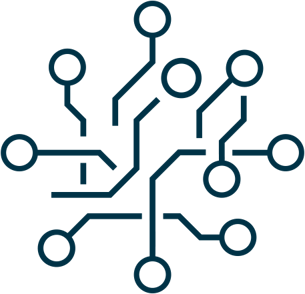The Microsoft 2024 State of Multicloud Security Risk Report revealed a concerning trend: over half of organizations faced at least one potential attack path in 2023, with 66% of these attacks targeting insecure credentials.1 This alarming statistic underscores the urgent need for organizations to prioritize credential security and adopt robust security practices to mitigate risks in multicloud environments.
Identity and Access Management (IAM) emerges as a key solution for security, compliance and innovation in this context. IAM solutions play a critical role in safeguarding organizations from cyber threats, ensuring regulatory compliance and enabling digital transformation. This article will explore IAM solutions that can help organizations ensure compliance while driving digital transformation.
IAM: Beyond Basic Protection
IAM goes beyond traditional security measures by providing a comprehensive approach to user access management. Here is how IAM safeguards organizations in the digital age:
Advanced Threat Detection and Response
-
Proactive Threat Management: IAM integrates seamlessly with advanced security frameworks such as Security Information and Event Management (SIEM) and Security Orchestration, Automation and Response (SOAR) to proactively identify and respond to potential threats. By analyzing user behavior patterns and detecting anomalies, IAM can flag suspicious activities and trigger automated responses, such as account lockout or password reset.
-
Zero Trust Architecture: IAM plays a pivotal role in implementing Zero Trust architecture, which assumes that no user or device is inherently trustworthy. By enforcing continuous verification and authorization, IAM ensures that only authorized individuals have access to sensitive resources. This reduces the attack surface and minimizes the impact of potential breaches.
Compliance and Risk Management
- Adherence to Industry Regulations: IAM solutions help organizations comply with a wide range of industry regulations, including GDPR, HIPAA and PCI DSS. By enforcing granular access controls and automating policy enforcement, IAM ensures that only authorized individuals have access to sensitive data.
- Risk Mitigation: IAM reduces security risks by implementing robust identity governance and administration (IGA) practices. IGA enables organizations to manage user identities throughout their lifecycle, from provisioning to de-provisioning. By automating user provisioning and de-provisioning processes, IAM minimizes the risk of unauthorized access and data breaches.
Mitigating Insider Threats
- Enhanced IAM Protocols: IAM can help mitigate insider threats by implementing strong authentication mechanisms, such as multi-factor authentication (MFA) and biometrics. MFA adds an extra layer of security by requiring users to provide multiple forms of identification, such as a password, security token and fingerprint.
- Real-time Monitoring and Response: IAM solutions can monitor user behavior in real-time and detect anomalies that may indicate malicious activity. If suspicious activity is detected, IAM can automatically trigger alerts, initiate investigations, and take corrective actions, such as suspending user accounts or revoking access privileges.
Learn more: Optimise Your MFA Implementation With These 8 Key Practices
IAM as a Catalyst for Business Transformation
IAM is not merely a security tool; it serves as a springboard for business growth and innovation. Here is how IAM fuels digital transformation initiatives:
Driving Digital Identity Transformation
- Unified Digital Identities: IAM enables organizations to create secure and unified digital identities for all users, including employees, customers, partners and IoT devices. This simplifies access management and enhances user experience across various applications and platforms.
- Self-Service Identity Management: IAM empowers users to manage their own identities through self-service portals, reducing the burden on IT and improving user satisfaction.
Enhancing Customer Trust and Loyalty

- Secure and Seamless User Experiences: IAM facilitates secure, seamless, and personalized user experiences, fostering trust and loyalty. Customers appreciate the convenience and security of IAM-enabled services, such as single sign-on (SSO) and MFA.
- Data Privacy and Security: IAM helps organizations protect customer data by enforcing strong access controls and monitoring user activity. This builds trust and ensures that customer information is safeguarded.
Supporting Digital Ecosystem Integration
- Secure Collaboration: IAM enables secure collaboration with external partners, suppliers and customers by providing controlled access to shared resources and data. This fosters innovation and accelerates business processes. For example, a supplier can access relevant procurement data securely without exposing sensitive internal information, ensuring compliance with data protection regulations and enhancing operational efficiency.
- Streamlined Identity Federation: IAM supports identity federation, allowing users to access multiple applications and services with a single set of credentials. This simplifies access management and improves user experience.
Facilitating Innovation and Agility
- Accelerated Application Development: By automating the provisioning and de-provisioning of user access, IAM streamlines the development lifecycle. This ensures rapid delivery of applications and resources, allowing organizations to stay ahead in competitive markets while reducing overhead in manual access controls.
- Dynamic Agile Access Management: With a focus on adaptability, IAM supports agile development frameworks by enabling dynamic user access provisioning. This capability aligns with ever-evolving project demands, ensuring that teams can swiftly respond to changes without compromising on security or efficiency.
Integrating IAM with Other Technologies
For optimal security and functionality, IAM should be integrated with other key technologies:
IAM and Cloud Services
- Centralized Access Management: IAM provides a centralized platform for managing user access across multiple cloud environments, such as AWS, Azure and Google Cloud Platform. This simplifies access management and ensures consistent security policies.
- Cloud Identity and Access Management (CIAM): Cloud IAM is specifically designed for managing identities and access within cloud environments. It provides essential features like role-based access control, self-service user management, password reset and multi-factor authentication. These capabilities address the unique challenges of securing cloud-based systems while enhancing user experience and operational efficiency.
IAM and IoT
- Device Identity and Access Management: IAM can manage the identities and access permissions of IoT devices, ensuring that only authorized devices can connect to the network and access sensitive data.
- Secure Device Provisioning: IAM can automate the provisioning of IoT devices, ensuring that they are configured with appropriate security settings and access privileges.
IAM and AI/ML Systems
- Enhanced Identity Verification: Artificial Intelligence (AI) and Machine Learning (ML) can be used to improve identity verification processes by analyzing various data points, such as facial recognition and voice biometrics. This can help detect and prevent identity fraud and unauthorized access.
- Automated Threat Detection and Response: AI and ML can analyze user behavior patterns and detect anomalies that may indicate malicious activity, enabling IAM to automatically trigger alerts and take corrective actions.
Strategies for Implementing IAM to Enable Innovation
Adopt a Holistic IAM Approach
- Integrated Security Strategy: IAM should be integrated into the overall security strategy to ensure a cohesive and comprehensive approach to protecting sensitive information.
- Business Alignment: IAM initiatives should be aligned with business objectives to support innovation and growth.
Leverage Automation and AI
- Streamlined Processes: Automation can streamline IAM processes, such as user provisioning, de-provisioning, and password resets, reducing manual effort and improving efficiency.
- Intelligent Identity Analytics: AI and ML can be used to analyze user behavior patterns and detect anomalies, enabling proactive threat detection and response.
Focus on User-Centric Design
- Seamless User Experience: IAM solutions should be designed with a focus on user experience, minimizing friction and improving adoption.
- User Feedback: Gathering feedback from users can help identify areas for improvement and enhance the user experience.
Promote Cross-Departmental Collaboration
- Shared Responsibility: IAM is a shared responsibility across IT, security, and business units. Collaboration is essential to ensure that IAM initiatives are aligned with organizational goals.
- Cross-Functional Teams: Creating cross-functional teams can facilitate collaboration and ensure that diverse perspectives are considered.
Implement Strong Governance and Policies
- Robust Governance Framework: A strong governance framework is essential to oversee IAM initiatives and ensure compliance with regulations.
- Clear Policies and Procedures: Clear policies and procedures should be established to govern identity management practices, such as password policies, access controls and incident response procedures.
IAM is not just a security measure; it is a strategic enabler of digital transformation. By implementing a robust IAM strategy, organizations can unlock the full potential of their digital initiatives, drive innovation and protect their most valuable asset: their data.
As the digital landscape continues to evolve, IAM will remain a critical component of any successful digital transformation journey. By embracing IAM as a catalyst for innovation, organizations can build a secure, agile and customer-centric future. Contact Adnovum’s team of IAM experts today for IAM consulting to strengthen your organization’s security measures.
📩 Sign up for our newsletter and gain access to exclusive executive insights and event invitations.
Reference:
1. Microsoft Security. (2024). 2024 State of Multicloud Security Report.





